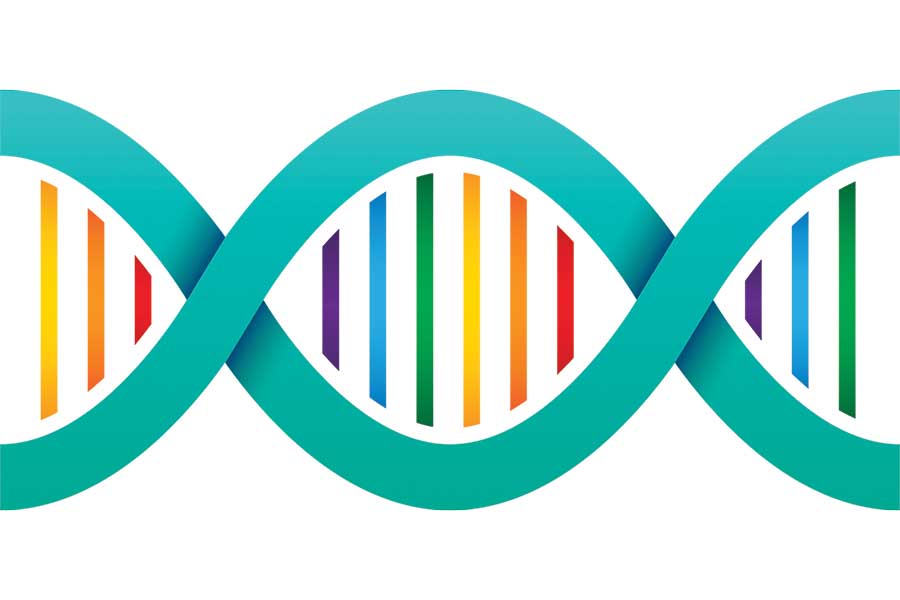A massive new study indicates sexual orientation cannot be predicted by a single “gay gene” as previously pondered but genetics do play a role in sexual orientation.
The controversial new research, published on August 29 in “Science” and was based on an ambitious study of the genomes of nearly 500,000 people. The results indicate that sexual orientation has a genetic component but there is no single gene that can be isolated to define what “causes” homosexuality as opposed to heterosexuality. The “Science” study explains that a plethora of genetic and environmental factors play a role.
The researchers wrote, “Analyses of inheritance of sexual orientation in humans has indicated that same-sex sexual behavior has a genetic component… A genome-wide association study on 493,001 participants from the United States, the United Kingdom and Sweden to study genes associated with sexual orientation…Like other behavioral traits, nonheterosexual behavior is polygenic.”
According to the study, by an international team of researchers, a third or more of the genomic spread plays a role in determining whether an individual has same-sex sexuality. But that comes from a combination of genes, making it impossible to determine someone’s sexuality based on genes alone.
While the study appears to sunder the “gay gene” theory, the details also provide new insights into the genetic complexities of sexuality and how it develops differently in a significant minority — as much as 10 percent — of the human population that has sex with same-sex partners, either exclusively or in addition to opposite-sex partners.
The international team of researchers who analyzed genetic data were succinct that gayness is not a vague phenomenon but a fully-realized sexual orientation with several genetic components.
“Across human societies and in both sexes, some 2 percent to 10 percent of individuals report engaging in sex with same-sex partners, either exclusively or in addition to sex with opposite-sex partners,” wrote the study authors.
The study found, for example, that same-sex attraction can have a biological component. Researchers explained that identical twins are more likely to share the same sexual orientation than either fraternal twins or other siblings. Researchers asserted that these factors suggest genetic influences.
The data was vast, funded by the National Institutes of Health and other national and international agencies, including the National Science Foundation and the Eunice Kennedy Shriver National Institute of Child Health and Human Development, which made funding available specifically to investigate the genetics of sexual orientation.
Researchers analyzed data for 477,522 participants in surveys from the U.K. and U.S. and did comparison testing of 15,142 people in the U.S. and Sweden. One intriguing component was how the surveys were skewed: Some surveys recorded whether the individuals ever had a same-sex partner while others recorded how people identified their orientation.
The genetic data came from several sources. One source was the U.K. Biobank where people ages 40-69 answered extensive health and behavioral questions between 2006-10. The researchers also used data from nearly 70,000 customers of the genetic testing service 23andMe. These people had a median age of 51, were mostly American and had answered survey questions about sexual orientation. All were of white European descent, which is significant as gayness runs across all racial and ethnic groups. This was one of the factors that the study authors explained limited a broader application of the study’s findings. Also, trans people were not included in the study.
The study revealed several hundred genes influence sexuality. The researchers found five genomic spots with significant effects on sexual orientation. When tested, the researchers discovered that these genetic factors combined accounted for 8-25 percent of same-sex behavior the study’s participants reported.
Additionally, researchers found that different genetics resulted in same-sex behavior for women than for men. This difference could be hormonal or socially constructed, according to the researchers. Women are more “gender fluid” than men and there are more bisexual women than men, the study found. “Just the fact that they look at women is a hooray,” said Melinda Mills, a professor of sociology at the University of Oxford, who wrote a commentary that “Science” published with the study.
The study authors also explained and explored how same-sex behavior and attitudes changed over the lifetimes of the participants, which, they concluded, means there is a significant impact from socialization and social environments.
The study concluded that genetics cannot completely determine who will be gay, bisexual or heterosexual. But Benjamin Neale, a geneticist at the Broad Institute of M.I.T. and Harvard and one of the lead researchers on the international team who is also openly gay, said, “I hope that the science can be used to educate people a little bit more about how natural and normal same-sex behavior is. It’s written into our genes, and it’s part of our environment. This is part of our species, and it’s part of who we are.”
